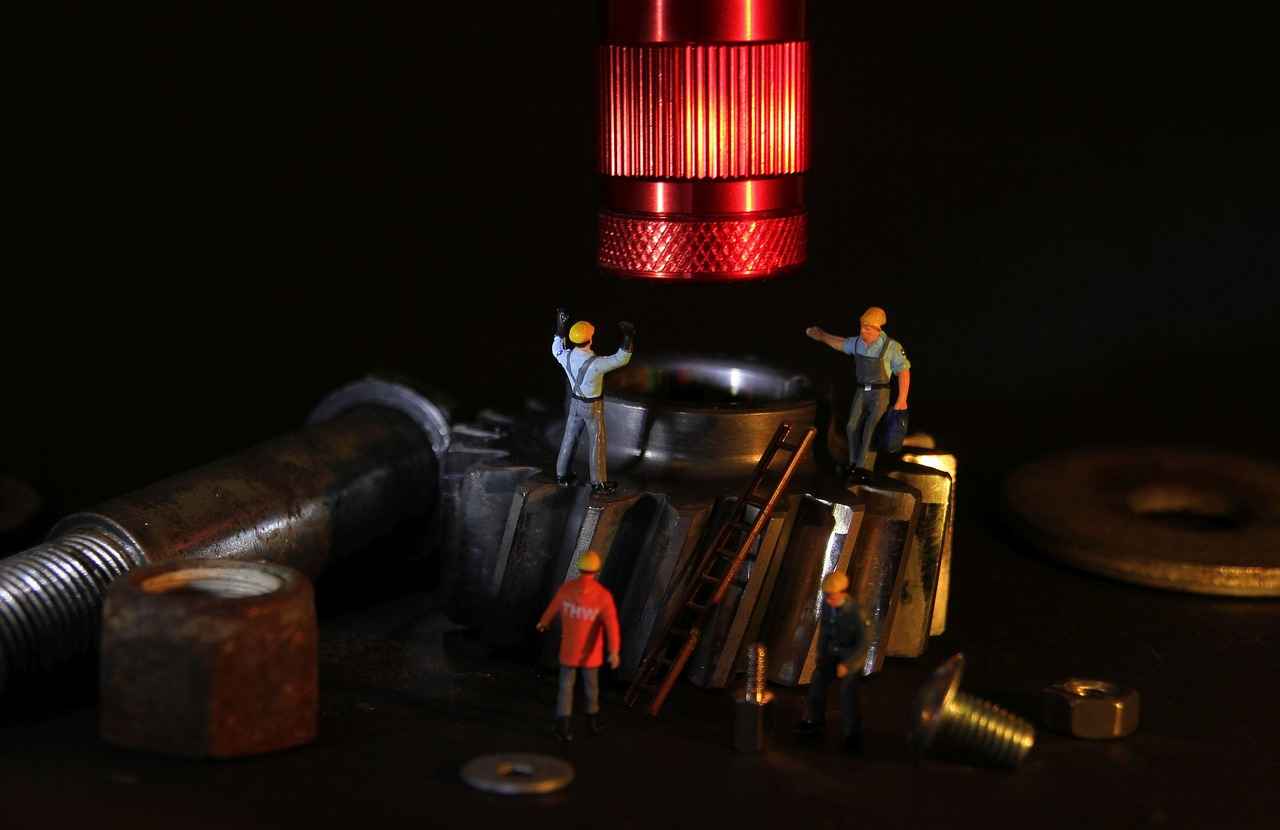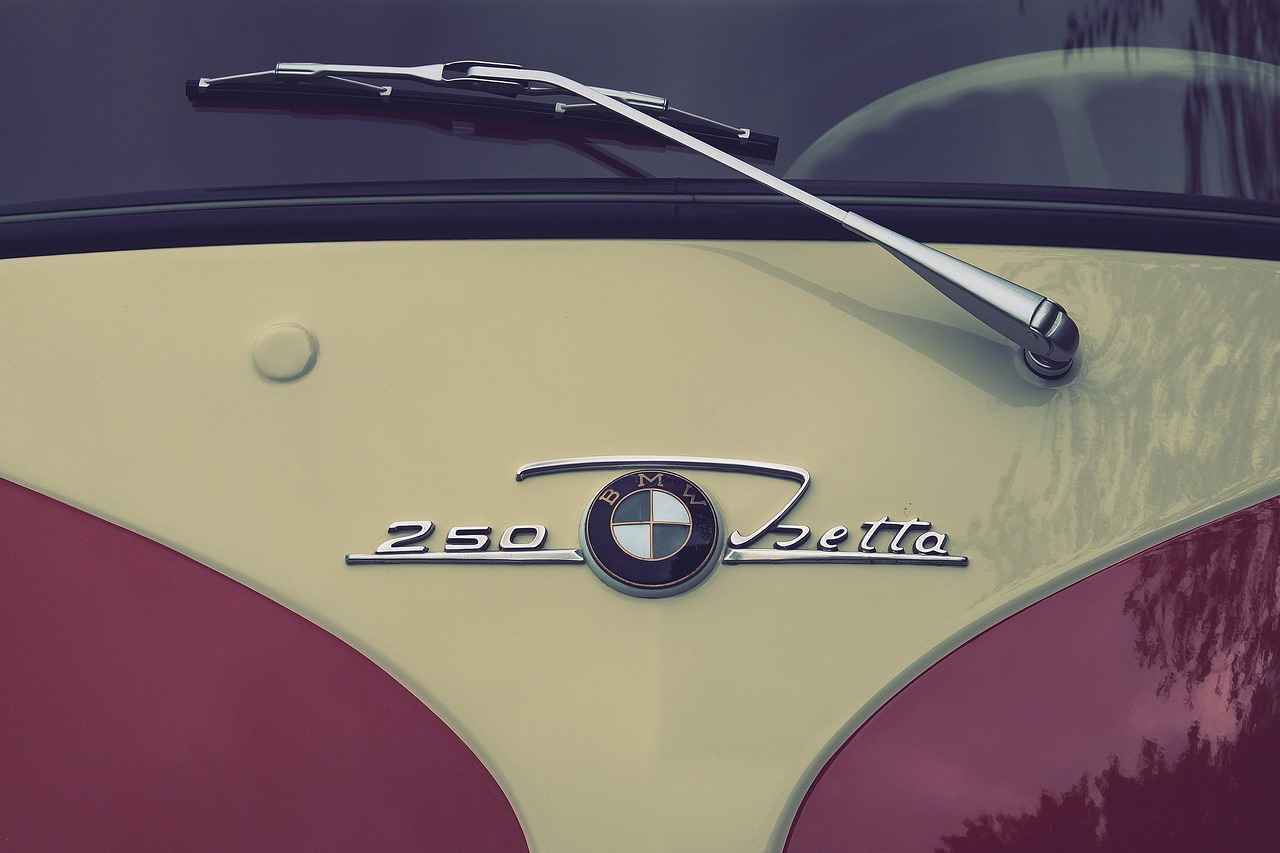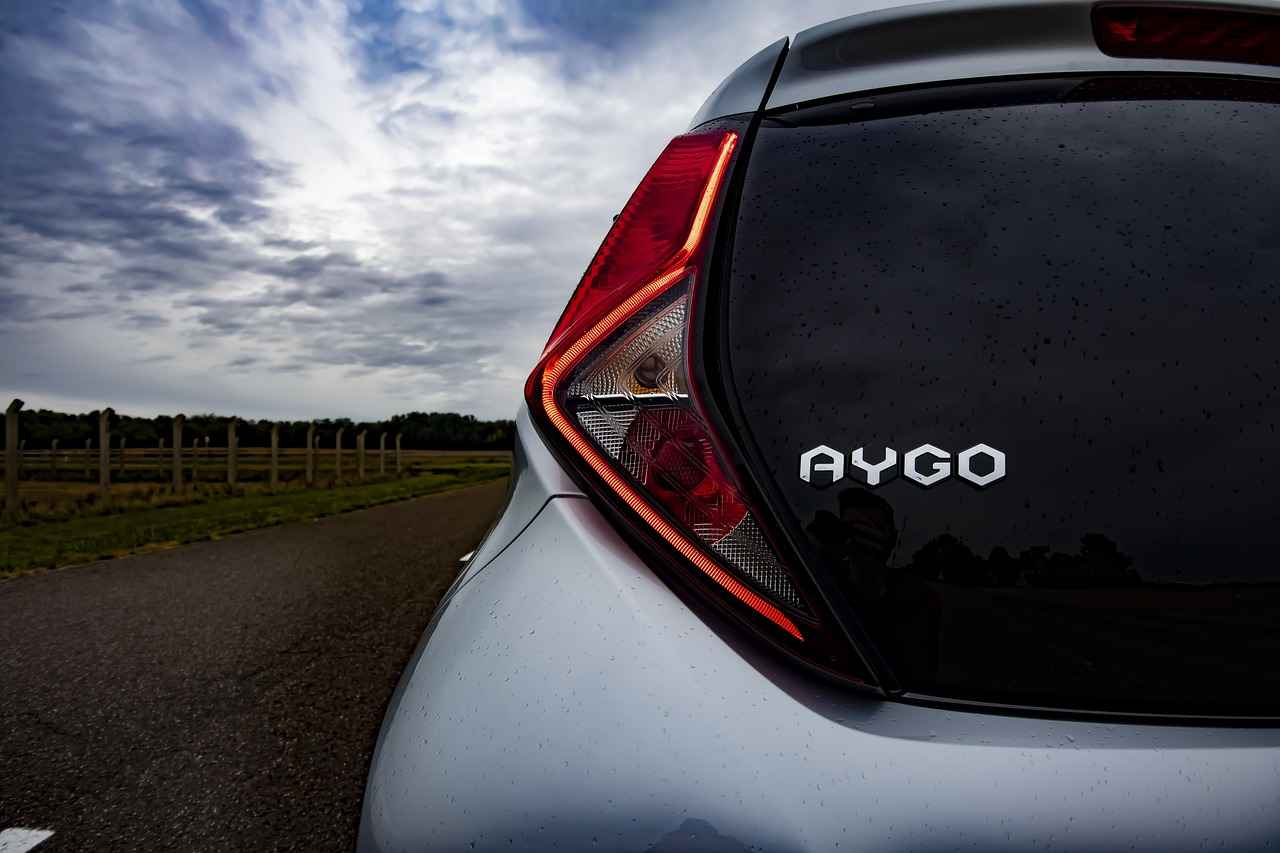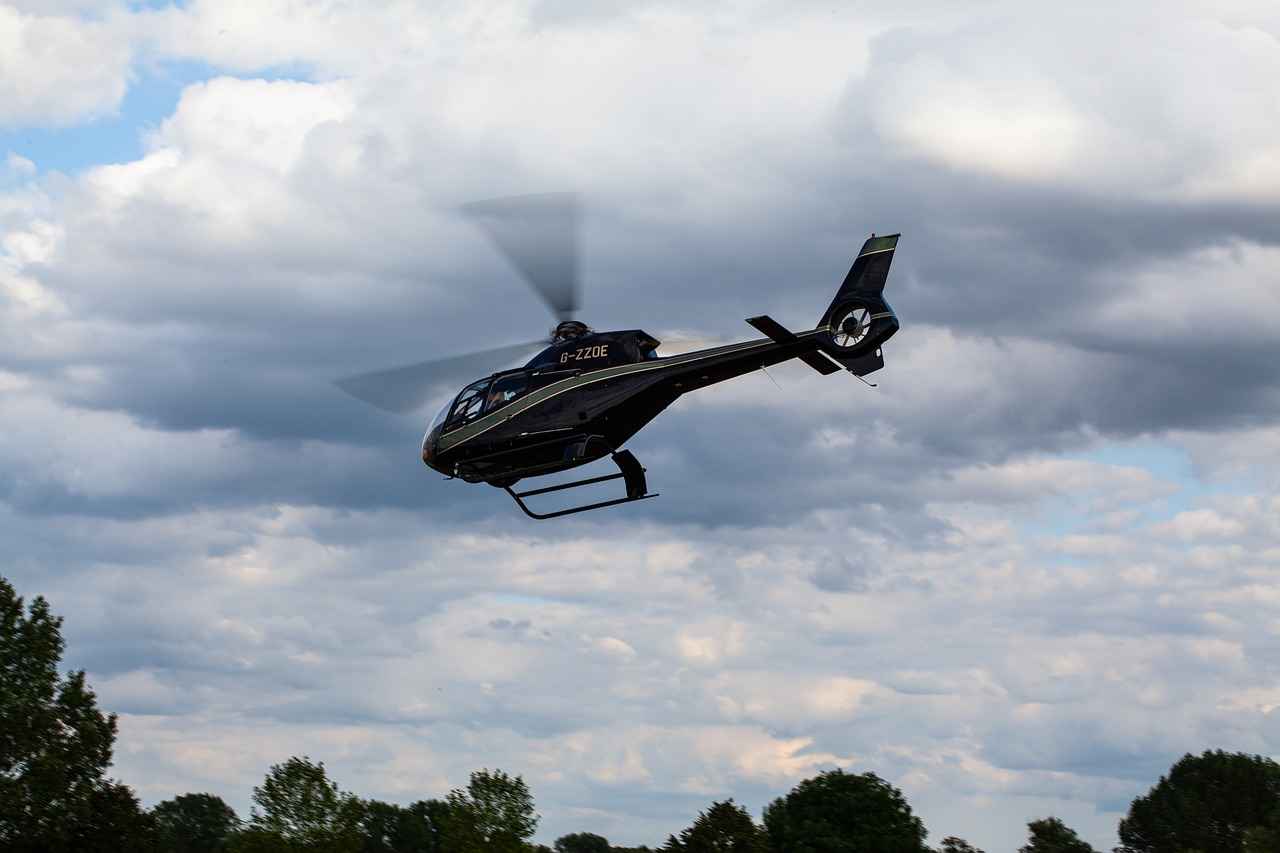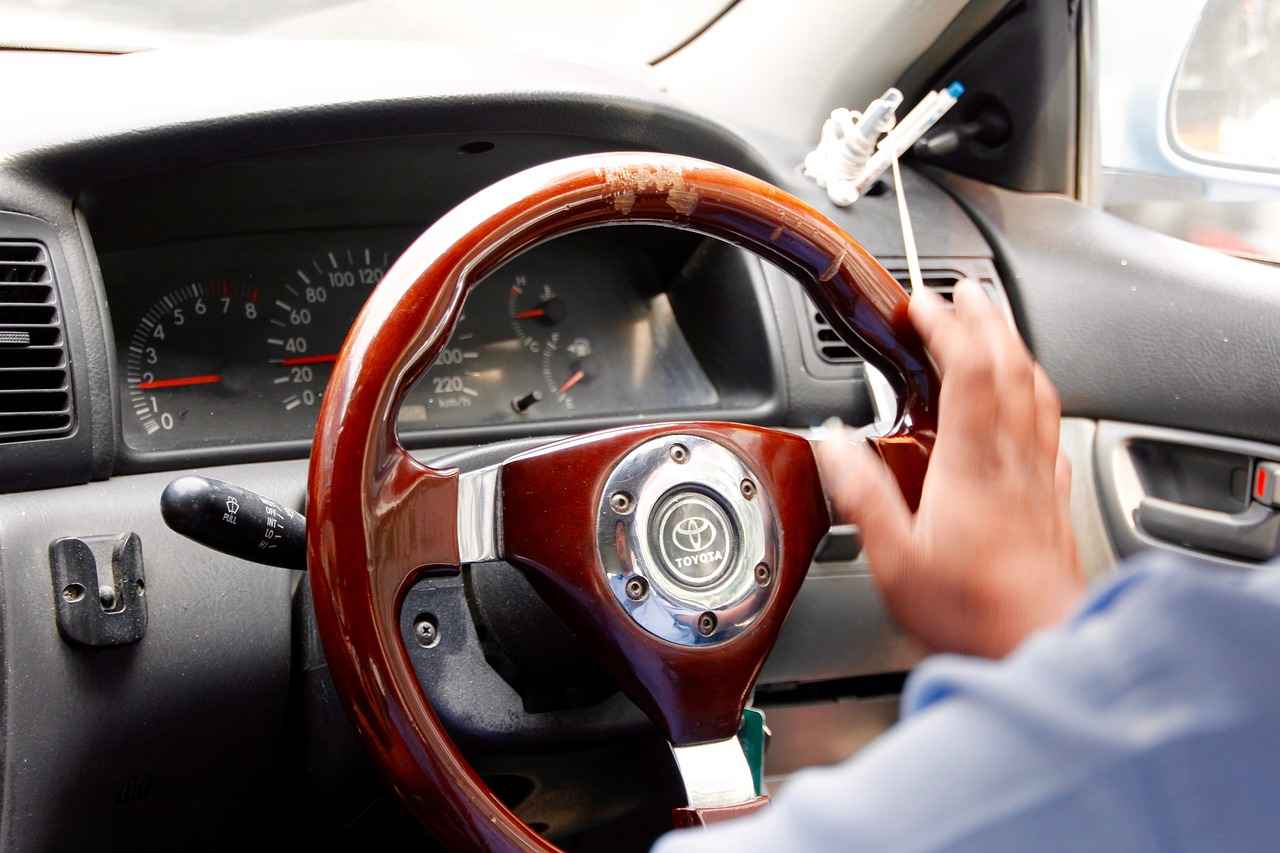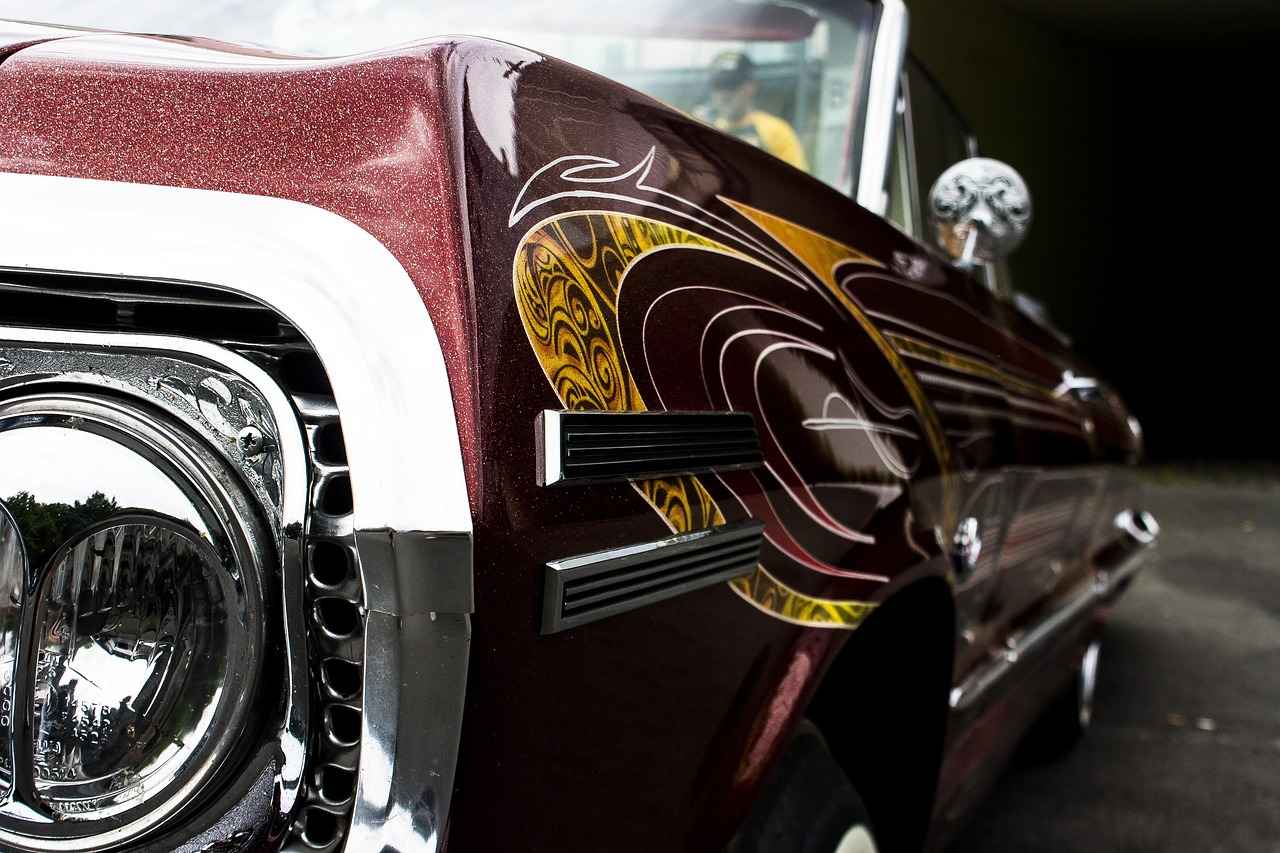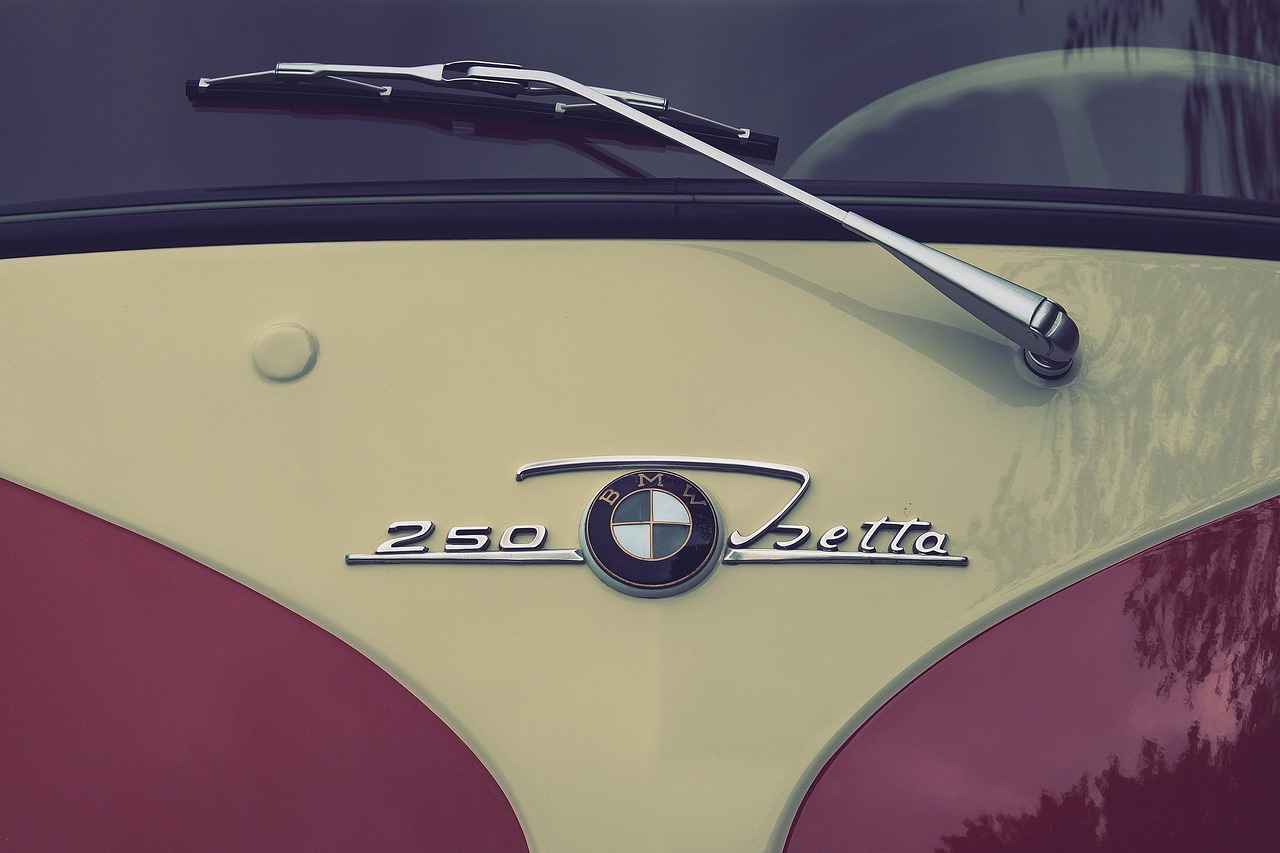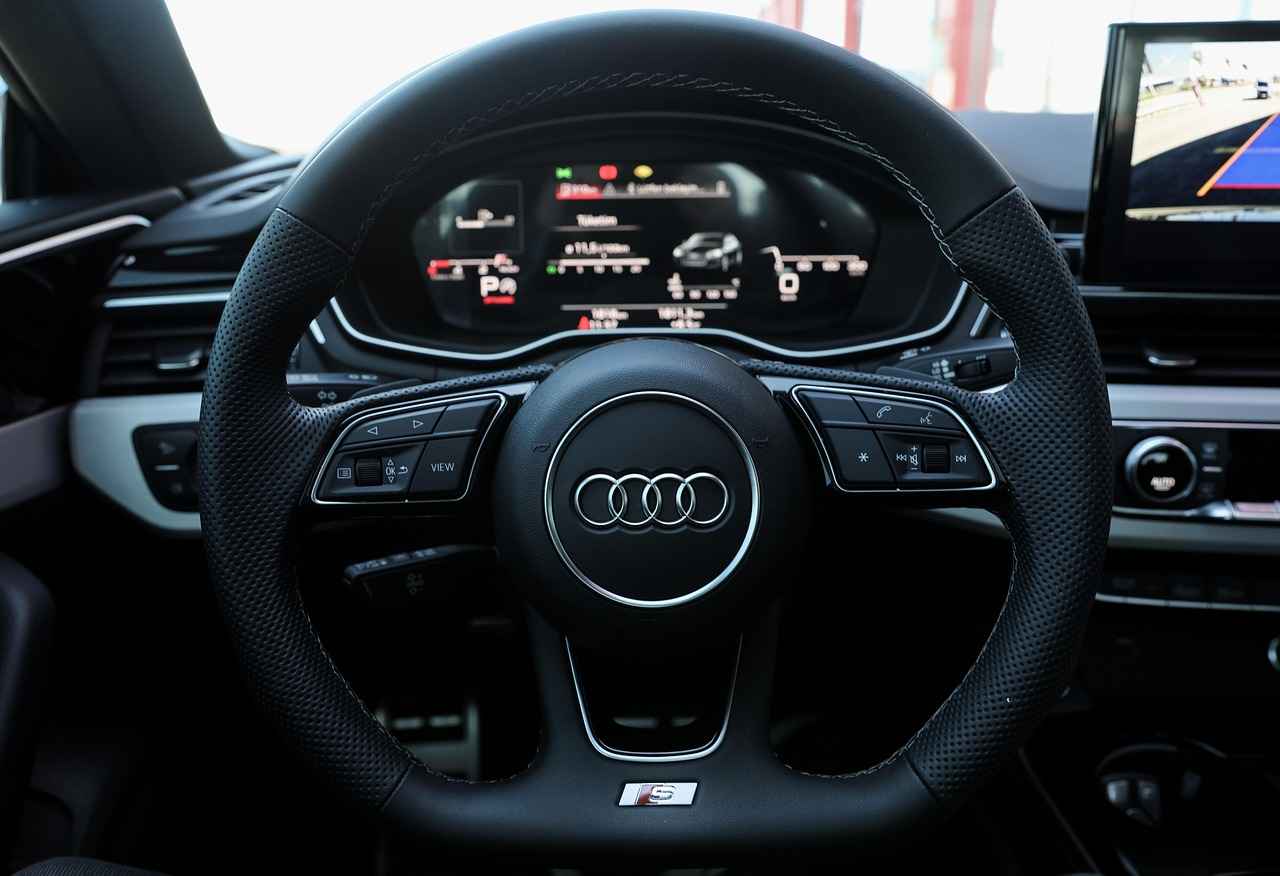This article explores the fascinating history of windshield wipers, detailing their invention, evolution, and impact on automotive safety and design.
What Are the Origins of Windshield Wipers?
The origins of windshield wipers can be traced back to the early 20th century, a time when automobiles were becoming increasingly popular. As drivers faced the challenge of maintaining visibility during adverse weather conditions, the demand for an effective solution grew. The need for improved visibility during rain and snow became apparent, leading to innovative solutions that would eventually revolutionize automotive design.
Who Was the Inventor of Windshield Wipers?
Mary Anderson is credited with inventing the first functional windshield wiper in 1903. Her groundbreaking design was a response to the common problem of obstructed views while driving. By enhancing visibility during inclement weather, Anderson’s invention significantly improved driving safety and laid the foundation for future advancements in automotive technology.
How Did Mary Anderson’s Design Work?
Anderson’s original design featured a hand-operated arm that could be moved back and forth across the windshield. This mechanism allowed drivers to manually clear away rain and debris, ensuring a clearer view of the road ahead. Although it was a simple concept, it marked a pivotal moment in automotive safety.
What Challenges Did Early Wipers Face?
Despite their innovative design, early windshield wipers faced several challenges. They often struggled with reliability and effectiveness, requiring manual operation and frequent adjustments by the driver. This made them less than ideal for many users, as they could be cumbersome and distracting during adverse weather conditions.
How Did Technology Evolve Over Time?
The introduction of electric windshield wipers in the 1920s marked a significant advancement in wiper technology. This innovation allowed for automatic operation, freeing drivers from the need to manually adjust the wipers and greatly enhancing convenience. Electric wipers quickly became the industry standard, leading to further improvements in design and functionality.
What Impact Did Windshield Wipers Have on Automotive Safety?
The invention of windshield wipers had a profound impact on automotive safety. By significantly reducing accidents caused by poor visibility, they set a new standard for vehicle design. As automotive safety regulations evolved, windshield wipers became a crucial component in ensuring that drivers could maintain visibility in all weather conditions.
How Have Windshield Wipers Changed Over the Years?
Windshield wiper technology has undergone significant evolution over the decades. Modern wipers incorporate advanced materials and designs that improve performance and durability. Today’s wipers are engineered to withstand harsh weather conditions while providing optimal visibility.
What Innovations Have Been Introduced?
- Adaptive Wipers: Recent innovations include adaptive wipers that automatically adjust their speed based on rain intensity, providing a tailored response to changing weather conditions.
- Heated Wiper Blades: Heated wiper blades have been developed to prevent ice buildup, ensuring that drivers maintain visibility even in freezing temperatures.
How Do Windshield Wipers Contribute to Modern Vehicle Design?
Today’s windshield wipers are designed to blend seamlessly with vehicle aesthetics while ensuring maximum functionality. Engineers focus on creating wipers that are not only effective but also visually appealing, reflecting advancements in both engineering and design. The integration of wipers into the overall vehicle design has become more sophisticated, showcasing the importance of aesthetics in modern automotive engineering.
In conclusion, the history of windshield wipers is a testament to the ongoing innovation in automotive safety and design. From Mary Anderson’s original invention to today’s advanced technologies, windshield wipers have played a crucial role in enhancing driver visibility and safety on the roads.

What Are the Origins of Windshield Wipers?
The history of windshield wipers is a fascinating tale that reflects the evolution of automotive technology and the persistent human desire for safety and comfort while driving. Windshield wipers were born out of necessity, addressing a critical need for visibility in adverse weather conditions. Their journey began in the early 20th century, a time when automobiles were becoming increasingly popular and the demand for safer driving experiences was on the rise.
Before the invention of the windshield wiper, drivers faced significant challenges during rain or snow. Visibility was often compromised, leading to hazardous driving conditions and a higher risk of accidents. The need for a solution was clear, and it was during this time that innovative minds began to explore ways to tackle the issue.
Mary Anderson is widely recognized as the pioneer behind the first functional windshield wiper, which she invented in 1903. Her design was revolutionary, as it allowed drivers to maintain visibility by manually clearing the windshield during inclement weather. The initial design featured a hand-operated arm that could be moved back and forth across the glass, effectively removing rain and debris. This simple yet effective mechanism marked a significant step forward in automotive safety.
However, the early years of windshield wipers were not without challenges. Many designs struggled with reliability, often requiring frequent adjustments from the driver. The manual operation was cumbersome, and it wasn’t until the advent of electric wipers in the 1920s that the technology truly began to evolve. This advancement allowed for automatic operation, significantly enhancing the convenience and safety of driving in poor weather conditions.
As technology progressed, so did the design and functionality of windshield wipers. Innovations such as variable speed settings and intermittent wipers were introduced, allowing drivers to customize their wiper settings based on the intensity of the rain. This adaptability not only improved driver comfort but also contributed to safer driving practices.
In modern vehicles, windshield wipers have become an integral part of automotive design. They are engineered to blend seamlessly with the aesthetic of the car while ensuring maximum functionality. Recent innovations include adaptive wipers that adjust their speed based on real-time weather conditions and heated wiper blades that prevent ice buildup, further enhancing their effectiveness in winter conditions.
Today, the evolution of windshield wipers continues, driven by advancements in materials and technology. Manufacturers are constantly seeking ways to improve performance, durability, and efficiency. This ongoing innovation not only reflects the changing needs of drivers but also highlights the importance of safety in vehicle design.
In summary, the origins of windshield wipers are rooted in the early 20th century, driven by the need for improved visibility during adverse weather conditions. From Mary Anderson’s manual design to the sophisticated automatic systems we see today, windshield wipers have come a long way. Their evolution has significantly impacted automotive safety, making them a crucial component of modern vehicles.

Who Was the Inventor of Windshield Wipers?
The history of automotive safety is intertwined with numerous innovations, but few inventions have had as profound an impact as the windshield wiper. Among the key figures in this evolution is Mary Anderson, who is widely recognized for her groundbreaking invention of the first functional windshield wiper in 1903. This innovation not only transformed driving experiences but also significantly enhanced safety on the roads.
Mary Anderson, a visionary from Alabama, identified a critical need for improved visibility during inclement weather. Before her invention, drivers faced considerable challenges when navigating rain and snow, often resorting to manual methods to clear their windshields. Anderson’s invention was a game-changer that addressed these issues head-on.
Anderson’s initial design was a simple yet effective mechanism. It featured a hand-operated arm that could be moved back and forth across the windshield. This manual operation allowed drivers to clear away rain and debris, providing them with a clearer view of the road ahead. The simplicity of her design laid the foundation for future advancements in windshield wiper technology.
Despite its revolutionary nature, Anderson’s design faced several challenges. Early windshield wipers often struggled with reliability and effectiveness. They required frequent adjustments by the driver, which could be distracting and dangerous. Additionally, the manual operation meant that drivers had to take their hands off the wheel, increasing the risk of accidents.
The automotive industry saw significant advancements in the 1920s with the introduction of electric windshield wipers. This innovation marked a pivotal moment in wiper technology, allowing for automatic operation. Electric wipers improved driver convenience and safety by enabling a consistent and reliable clearing of the windshield without manual intervention.
The introduction of windshield wipers had a profound impact on automotive safety. By enhancing visibility during adverse weather conditions, they played a crucial role in reducing accidents. The ability to maintain a clear view of the road became a standard expectation in vehicle design, leading to safer driving environments.
Windshield wiper technology has continued to evolve significantly since Anderson’s initial invention. Modern wipers incorporate advanced materials and designs that enhance performance and durability. Innovations such as silicone blades and aerodynamic designs have improved the efficiency of wipers, allowing them to perform better in various weather conditions.
- Adaptive Wipers: These wipers adjust their speed based on the intensity of the rain, providing optimal performance in varying conditions.
- Heated Wiper Blades: Designed to prevent ice buildup, these blades ensure clear visibility even in freezing temperatures.
- Rain Sensors: These sensors automatically activate wipers when they detect moisture on the windshield, enhancing convenience for drivers.
Today’s windshield wipers are not only functional but also designed to blend seamlessly with vehicle aesthetics. Manufacturers prioritize not just performance but also the visual appeal of wipers, reflecting advancements in engineering and design. This integration ensures that wipers complement the overall look of modern vehicles while maintaining their critical role in safety.
How Did Mary Anderson’s Design Work?
The invention of the windshield wiper is a pivotal moment in automotive history, greatly enhancing driver safety and comfort. Among the early innovators, Mary Anderson stands out for her groundbreaking design in 1903. Her invention not only addressed a critical safety issue but also paved the way for future advancements in vehicle technology.
Mary Anderson’s original design featured a hand-operated arm that could be manually adjusted to sweep across the windshield. This innovative mechanism allowed drivers to clear away rain and debris effectively, improving visibility during adverse weather conditions. The design consisted of a lever inside the vehicle that, when pulled, moved a rubber blade back and forth across the glass surface.
The simplicity of Anderson’s design was both its strength and its limitation. While it provided a practical solution for the time, it required the driver to operate it manually, which could be cumbersome, especially during heavy rain or snow. The wiper arm was attached to a pivot point, allowing it to move in a controlled arc. This motion ensured that water and debris were pushed off the windshield, rather than smeared across it.
Moreover, the rubber blade used in Anderson’s design was crucial for its effectiveness. The rubber material was flexible enough to conform to the surface of the windshield, ensuring a clean sweep. This feature minimized the chances of streaking, which could obscure the driver’s view. Although the initial models were not perfect, they represented a significant leap forward in automotive safety.
One of the challenges Anderson faced was convincing manufacturers and the public of the wiper’s necessity. At the time, many drivers relied on their own methods, such as using cloths or manually clearing the glass with their hands. However, as the automotive industry grew, the demand for improved safety features became more pronounced, leading to a gradual acceptance of Anderson’s invention.
In the years following her invention, the windshield wiper underwent numerous improvements. The introduction of electric windshield wipers in the 1920s marked a major technological advancement. Unlike Anderson’s manual design, electric wipers could operate automatically, allowing drivers to focus on the road without needing to adjust their wipers manually.
Despite the initial resistance, Anderson’s design laid the foundation for future innovations. The concept of a windshield wiper has evolved significantly, with modern wipers incorporating advanced technology such as rain sensors that automatically adjust the wiper speed based on rainfall intensity. Today’s wipers are also designed to be more aerodynamic, reducing wind resistance and noise while enhancing performance.
In summary, Mary Anderson’s hand-operated windshield wiper was a revolutionary invention that addressed a crucial need for improved visibility in vehicles. While it faced challenges in gaining widespread acceptance, its impact on automotive safety cannot be overstated. As technology progressed, the basic principles of her design continued to influence the development of modern windshield wipers, ensuring that drivers remain safe and comfortable on the road.
What Challenges Did Early Wipers Face?
The development of windshield wipers has significantly transformed the driving experience, but the journey was not without its hurdles. In the early days of automotive engineering, windshield wipers faced numerous challenges that hindered their reliability and effectiveness.
Early windshield wipers, introduced in the early 20th century, were often plagued by a variety of issues that made them less than ideal for drivers. Here are some of the key challenges:
- Manual Operation: The first windshield wipers required manual operation, which meant that drivers had to physically move the wiper arm back and forth to clear the windshield. This was not only inconvenient but also distracting, as it took the driver’s attention away from the road.
- Frequent Adjustments: Due to their simplistic design, early wipers often needed constant adjustments to maintain effective clearing of rain and debris. This meant that drivers had to frequently stop and adjust the wipers, especially during sudden weather changes.
- Limited Effectiveness: The early designs were not very effective at clearing the windshield, particularly in heavy rain or snow. The wipers often left streaks or missed spots, which could severely impair visibility.
- Wear and Tear: The materials used in early wipers were not durable, leading to frequent breakdowns. Rubber blades would wear out quickly, requiring regular replacements, which added to the maintenance burden for drivers.
- Inconsistent Performance: The performance of these early wipers varied significantly based on the design and the materials used. Some wipers would work well in light rain but fail miserably in heavier conditions, creating a safety hazard.
As a result of these challenges, early windshield wipers often fell short of their intended purpose. Drivers were left to contend with impaired visibility, which could lead to dangerous driving conditions. The need for a more reliable and efficient solution became increasingly apparent.
The limitations of early manual windshield wipers spurred innovation in the automotive industry. By the 1920s, the introduction of electric windshield wipers marked a pivotal shift in design and functionality. Electric wipers allowed for automatic operation, freeing drivers from the burden of manual control and significantly improving safety.
With the advent of electric systems, the performance of windshield wipers improved dramatically. These systems could be designed to operate at varying speeds, allowing drivers to adjust the wiper speed according to the intensity of the rain. This flexibility enhanced visibility and, consequently, driving safety.
The evolution of windshield wipers has had a profound impact on automotive safety. By addressing the challenges faced by early models, modern wipers have become an essential component of vehicle design. The improved visibility provided by advanced wiper systems has contributed to a decrease in accidents caused by poor weather conditions.
In conclusion, while early windshield wipers faced significant challenges, the innovations that followed have transformed them into reliable and efficient safety devices. Today’s wipers are a testament to the ongoing evolution of automotive technology, ensuring that drivers can maintain clear visibility regardless of the weather.
How Did Technology Evolve Over Time?
The evolution of windshield wiper technology has been a remarkable journey, beginning with the early manual systems and advancing to the sophisticated mechanisms we see today. Understanding this progression not only highlights the ingenuity behind automotive design but also emphasizes the importance of visibility for driver safety.
In the 1920s, the automotive industry witnessed a groundbreaking innovation with the introduction of electric windshield wipers. This advancement allowed for automatic operation, significantly enhancing driver convenience and safety. Prior to this, drivers had to rely on manual wipers, which were often cumbersome and inefficient, particularly during heavy rain or snow.
The transition to electric wipers marked a pivotal moment in automotive history. With electric systems, drivers could easily control the wipers with a simple switch, allowing for greater focus on the road rather than the mechanics of clearing their vision. This innovation not only improved visibility but also reduced driver fatigue during long journeys.
- Speed Control: Early electric wipers often had multiple speed settings, allowing drivers to adjust the wiper speed according to the intensity of the rain.
- Intermittent Wiping: Some models introduced intermittent wiping, which enabled the wipers to pause between sweeps, conserving energy and minimizing wear.
- Self-parking Mechanism: This feature ensured that wipers returned to a resting position when turned off, enhancing the vehicle’s aesthetic appeal.
As safety regulations became more stringent, the need for effective windshield wipers became even more critical. Automakers began to invest in research and development to improve the efficiency and reliability of wiper systems. This led to the creation of more durable materials and innovative designs that could withstand various weather conditions.
The advancements did not stop with the introduction of electric wipers. Over the decades, numerous innovations have emerged:
- Rain Sensors: Modern vehicles often come equipped with rain-sensing technology that automatically activates the wipers when moisture is detected on the windshield.
- Heated Wiper Blades: These blades prevent ice and snow buildup, ensuring optimal performance in winter conditions.
- Adaptive Wipers: Some systems now adjust the speed and frequency of wipes based on real-time weather conditions, providing a tailored response to varying precipitation levels.
Today’s windshield wipers are not only functional but also designed to complement the overall aesthetics of modern vehicles. Manufacturers have worked to create low-profile wipers that blend seamlessly with the car’s design while maintaining high performance. This integration of form and function showcases the advancements in both engineering and design philosophy.
As technology continues to evolve, future innovations in windshield wipers may include smart technology that can communicate with other vehicle systems for enhanced safety. Potential developments might involve integrating wipers with navigation systems to anticipate weather conditions, further improving visibility and driver awareness.
In conclusion, the evolution of windshield wipers from manual to electric systems represents a significant leap in automotive technology. These advancements have not only improved driver convenience but have also played a crucial role in enhancing safety on the roads. As we look to the future, it is clear that the journey of windshield wiper technology is far from over, with exciting innovations on the horizon.
What Impact Did Windshield Wipers Have on Automotive Safety?
The invention of windshield wipers has played a crucial role in enhancing automotive safety. By significantly improving visibility during adverse weather conditions, windshield wipers have reduced the number of accidents caused by poor visibility, thus setting a new standard for vehicle design and functionality.
Before the advent of windshield wipers, drivers faced considerable challenges when navigating through rain, snow, or sleet. The absence of effective visibility solutions often led to dangerous driving conditions. With the introduction of windshield wipers, drivers gained the ability to maintain a clear view of the road ahead, even in the most challenging weather. This simple yet revolutionary tool has become an essential component of every vehicle, ensuring that drivers can respond quickly to changing road conditions.
The correlation between visibility and safety on the road is undeniable. Studies have shown that a significant percentage of accidents occur during inclement weather. According to the Federal Highway Administration, wet pavement contributes to approximately 75% of weather-related crashes. By effectively clearing rain and snow from the windshield, wipers help mitigate these risks, allowing drivers to see potential hazards and react promptly.
Windshield wipers have not only improved safety but have also influenced automotive design. Modern vehicles are engineered with streamlined wiper systems that enhance aerodynamics while ensuring optimal functionality. This integration of form and function reflects the industry’s commitment to safety and efficiency.
Over the years, windshield wiper technology has evolved significantly. Early manual systems have given way to sophisticated automatic wipers that adjust their speed based on the intensity of the rain. This innovation not only enhances driver convenience but also ensures maximum visibility at all times.
Recent innovations in windshield wiper technology include adaptive systems that can sense weather conditions and adjust their operation accordingly. These advanced features contribute to a safer driving experience by ensuring that the windshield remains clear, regardless of the weather. Additionally, heated wiper blades are now available to prevent ice buildup, further enhancing functionality during winter months.
The presence of reliable windshield wipers contributes significantly to driver confidence. Knowing that they can maintain visibility during adverse weather conditions allows drivers to focus more on the road and less on potential hazards. This psychological boost can lead to safer driving practices and a reduction in accident rates.
While windshield wipers are designed for durability, regular maintenance is essential to ensure their effectiveness. Drivers should periodically check their wiper blades for wear and replace them as needed. This simple maintenance task can significantly enhance safety by ensuring that the wipers function optimally when needed most.
In summary, the invention of windshield wipers has had a profound impact on automotive safety. By improving visibility, reducing accidents, and influencing vehicle design, windshield wipers have become an indispensable part of modern driving. As technology continues to advance, we can expect even greater innovations that will further enhance safety on the roads.

How Have Windshield Wipers Changed Over the Years?
Windshield wipers have undergone a remarkable transformation since their inception, evolving from simple manual devices into sophisticated components that significantly enhance vehicle safety and performance. This evolution has been driven by the need for better visibility in various weather conditions, leading to innovations that improve both functionality and durability.
Modern windshield wipers are crafted from advanced materials that greatly improve their effectiveness. Silicone rubber is now commonly used for wiper blades, providing better resistance to wear and tear compared to traditional rubber. This material not only lasts longer but also offers superior performance in harsh weather conditions. Additionally, the incorporation of graphene and other nanomaterials is being explored to enhance the wiper’s ability to repel water, ensuring clearer visibility during rain.
The design of windshield wipers has also seen significant advancements. Early models were basic and often required manual adjustment. Today’s wipers feature aerodynamic designs that minimize wind lift, allowing them to maintain contact with the windshield at high speeds. Furthermore, the introduction of beam blades has eliminated the need for traditional frames, resulting in a more uniform pressure distribution across the blade. This innovation leads to improved wiping performance and reduced streaking.
Technology has played a crucial role in enhancing windshield wiper functionality. The development of rain sensors allows wipers to operate automatically, adjusting their speed based on the intensity of rainfall. This feature not only enhances driver convenience but also ensures optimal visibility at all times. Moreover, integrated heating elements in wiper blades help prevent ice buildup, which is particularly beneficial in colder climates.
Windshield wipers are a vital component of vehicle safety. Their ability to clear rain, snow, and debris directly impacts a driver’s visibility. With advancements in wiper technology, the likelihood of accidents caused by poor visibility has significantly decreased. Modern wipers ensure that drivers can maintain a clear line of sight, even in the most challenging weather conditions.
The future of windshield wiper technology looks promising, with ongoing research focused on further innovations. Concepts such as self-cleaning wipers and smart wipers that can communicate with the vehicle’s onboard systems are being explored. These advancements aim to integrate wipers more closely with other vehicle technologies, enhancing overall safety and performance.
Today’s windshield wipers are not only functional but also designed to complement the aesthetics of modern vehicles. Manufacturers strive to create wipers that blend seamlessly with the vehicle’s lines, ensuring that they do not detract from the overall design. This focus on integration reflects broader trends in automotive design, where functionality and style go hand in hand.
In summary, the evolution of windshield wipers has been marked by significant technological advancements and innovative designs. From the materials used to their integration with vehicle systems, modern windshield wipers are a testament to the ongoing pursuit of safety and efficiency in automotive engineering.
What Innovations Have Been Introduced?
In the ever-evolving world of automotive technology, windshield wipers have undergone significant transformations to enhance their functionality and reliability. As vehicles become more advanced, so too do the components that ensure safety and visibility. Recent innovations in windshield wiper technology have not only improved performance but have also contributed to a safer driving experience.
One of the most noteworthy innovations is the development of adaptive wipers. These intelligent systems automatically adjust their speed based on the intensity of rainfall. This means that during a light drizzle, the wipers operate at a slower speed, conserving energy and reducing wear on the blades. Conversely, in heavy rain, they speed up to maintain optimal visibility. This technology ensures that drivers have a clear view of the road, regardless of weather conditions.
Another remarkable advancement is the introduction of heated wiper blades. These blades are designed to prevent ice buildup during winter months, which can hinder the wiper’s effectiveness. By incorporating heating elements, these blades melt any ice or snow that may accumulate, ensuring that the wipers function properly. This innovation not only enhances visibility but also reduces the risk of damage to the wiper system, prolonging its lifespan.
Modern vehicles are also equipped with rain sensors that detect moisture on the windshield. These sensors automatically activate the wipers when rain is detected, allowing drivers to focus on the road rather than manually adjusting their wipers. This feature is particularly useful in unexpected weather changes, providing an added layer of convenience and safety.
Advancements in materials have also played a crucial role in the evolution of windshield wipers. Manufacturers are now using high-quality rubber compounds and synthetic materials that resist wear and tear, ensuring that wipers last longer while maintaining optimal performance. These materials are designed to withstand extreme temperatures and environmental conditions, making them more durable than their predecessors.
Looking ahead, the future of windshield wiper technology seems promising. Innovations such as smart wipers that can communicate with a vehicle’s onboard systems to optimize their operation are on the horizon. These systems may integrate with other vehicle technologies, providing real-time data to enhance safety and performance. Furthermore, advancements in aerodynamics could lead to wipers that operate more efficiently, reducing drag and improving fuel economy.
In conclusion, the innovations in windshield wiper technology reflect a broader trend towards enhanced safety and convenience in automotive design. From adaptive wipers to heated blades and advanced materials, these developments are crucial in ensuring that drivers maintain clear visibility in all weather conditions. As technology continues to evolve, we can expect even more improvements that will further enhance the driving experience.
How Do Windshield Wipers Contribute to Modern Vehicle Design?
Windshield wipers are a crucial component of modern vehicles, playing a significant role in ensuring driver safety and comfort. As technology and design have evolved, so too have the features and aesthetics of windshield wipers. This article delves into how windshield wipers contribute to modern vehicle design, highlighting their seamless integration and innovative functionalities.
Windshield wipers are essential for maintaining visibility during adverse weather conditions. By effectively clearing rain, snow, and debris from the windshield, they help drivers maintain focus on the road, significantly reducing the risk of accidents. This safety feature has become a standard expectation in vehicle design, emphasizing the importance of functionality alongside aesthetic appeal.
Modern vehicle design trends prioritize aerodynamics and sleek aesthetics. Windshield wipers have evolved to complement these trends, often featuring low-profile designs that blend with the contours of the vehicle. Manufacturers strive to create wipers that are not only functional but also visually appealing, enhancing the overall look of the car. The integration of wipers into the vehicle’s design demonstrates a commitment to both form and function.
- Adaptive Wipers: These advanced systems adjust the speed and frequency of the wipers based on the intensity of the rain, providing optimal performance without driver intervention.
- Heated Wiper Blades: Designed to combat ice and snow, heated blades prevent buildup, ensuring consistent visibility in winter conditions.
- Sensor Technology: Many modern vehicles are equipped with rain sensors that automatically activate the wipers upon detecting moisture on the windshield.
The integration of advanced windshield wiper technology significantly enhances the user experience. Drivers benefit from features that reduce the need for manual adjustments, allowing them to focus on driving. Additionally, the quiet operation of modern wipers minimizes distractions, contributing to a more enjoyable ride. These improvements reflect a broader trend in automotive design that prioritizes driver comfort and safety.
Manufacturers are continually seeking ways to improve windshield wipers through research and development. Innovations such as silicone wiper blades offer extended durability and performance in various weather conditions. Furthermore, advancements in materials and manufacturing processes have led to wipers that are more resistant to wear and tear, ensuring long-lasting effectiveness.
Windshield wipers are a testament to the advancements in automotive engineering. Their design and functionality reflect a balance between cutting-edge technology and traditional mechanical principles. Engineers work diligently to ensure that wipers operate efficiently while minimizing wind noise and drag, contributing to the vehicle’s overall performance and fuel efficiency.
In conclusion, windshield wipers are more than just a functional component of a vehicle; they are a vital element of modern automotive design. Their evolution showcases the intersection of safety, aesthetics, and technology, making them an indispensable part of today’s driving experience.
Frequently Asked Questions
- Who invented the first windshield wiper?
The first functional windshield wiper was invented by Mary Anderson in 1903. Her innovative design greatly improved visibility for drivers during adverse weather conditions.
- How did early windshield wipers operate?
Early windshield wipers were primarily hand-operated, requiring the driver to manually move an arm back and forth across the windshield to clear rain or debris.
- What advancements have been made in windshield wiper technology?
Over the years, windshield wipers have evolved significantly, with the introduction of electric wipers in the 1920s, adaptive wipers that adjust speed based on rain intensity, and even heated blades to prevent ice buildup.
- How do windshield wipers enhance automotive safety?
Windshield wipers play a crucial role in automotive safety by improving visibility during rain or snow, thus reducing the likelihood of accidents caused by poor weather conditions.
- What is the future of windshield wiper design?
The future of windshield wiper design looks promising, with ongoing innovations aimed at enhancing performance and durability, while ensuring they seamlessly integrate with modern vehicle aesthetics.

